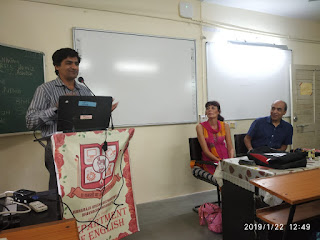Rod Ellis is a British professor and a well-known researcher of second language acquisition, language pedagogy and teacher education.
Date of Birth: May 29, 1944
Birthplace: Cheltenham, England
Zodiac Sign: Gemini
Nationality: British
Ethnicity: White
Father: James Donald
Mother: Anne Edith (Fleming) Ellis
Marital Status: Married
Spouse: Takayo Janagisawa (m. 1991)
Children:
Alma Mater:
Profile
Birth Name: Roderick James EllisDate of Birth: May 29, 1944
Birthplace: Cheltenham, England
Zodiac Sign: Gemini
Nationality: British
Ethnicity: White
Father: James Donald
Mother: Anne Edith (Fleming) Ellis
Marital Status: Married
Spouse: Takayo Janagisawa (m. 1991)
Children:
- Daughter: Anne Jennifer Ellis
- Son: James Anthony Ellis
Alma Mater:
- Bachelor, University Nottingham, 1965
- Master of Arts, University Leeds, 1971
- MED, University Bristol, 1978
- Doctorate from the University of London, 1982
Awards
- BAAL (British Association for Applied Linguists) Book Prize, 1986 for Understanding Second Language Acquisition
- MLA (Modern Language Association of America) Prize, 1988 for Second Language Acquisition in Context (ed.)
- Duke of Edinburgh best book prize, 1995 for The Study of Second language Acquisition
Quotes
“Instruction does not appear to influence the order of development. No matter what order grammatical structures are presented and practiced in the classroom, learners will follow their own “built-in” syllabus.” – Rod Ellis, 1984
Major Books
- Classroom Second Language Development (1984)
- Understanding second language acquisition (1985)
- Instructed Second Language Acquisition (1987)
- Second Language Acquisition in Context (ed.) (1987)
- Second Language Acquisition & Language Pedagogy (1992)
- The Study of Second Language Acquisition (1994)
- SLA Research and Language Teaching (1997)
- Research and Language Teaching (1998)
- First Steps in Reading: A Teacher's Handbook for Using Starter Readers in the Primary School (1998)
- Learning a Second Language Through Interaction (1999)
- Task-based Language Learning and Teaching (2003)
- Understanding Second Language Acquisition (2nd Edition) (2005)
- Language Teaching Research and Language Pedagogy (2012)
- Reflections on Task-Based Language Teaching (2018)
Did you know?
- Rod Ellis has served in the field of language teacher education for many years in different countries, such as Zambia, United Kingdom, Japan, United States, New Zealand, China, and Australia.
- Ellis held the longest position in teaching at the University of Auckland where he served from 1998 to 2012.
- In 2013 he was appointed as an Emeritus Professor in the University of Auckland.
- Ellis is a member of Applied Linguistics Association of New Zealand.
- Rod Elis is the recipient Marsden Research Grant, Marsden Fund, 2002.
- Ellis has written numerous books on Second Language Acquisition and student and teacher-training textbooks.
- At present many of his books on SLA and grammar have been adopted as the core textbooks in TESOL and Linguistics programs across the globe.
- His Understanding Second Language Acquisition won the BAAL Book Prize in 1986.
- His The Study of Second Language Acquisition was awarded the Duke of Edinburgh prize for the best book in applied linguistics.
- In June 25, 1991 Ellis Married Takayo Janagisawa.
- The couple has four children.











